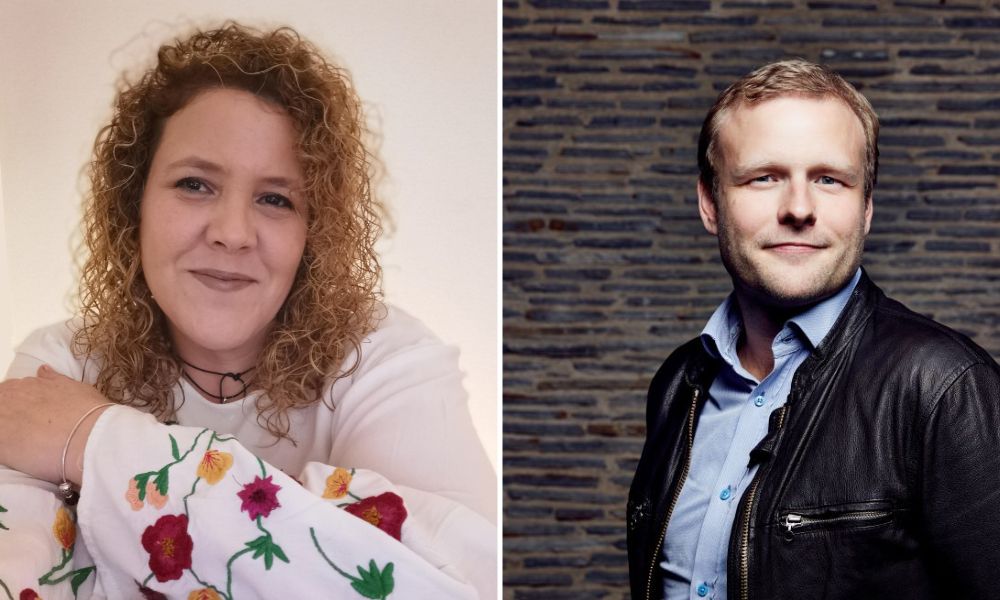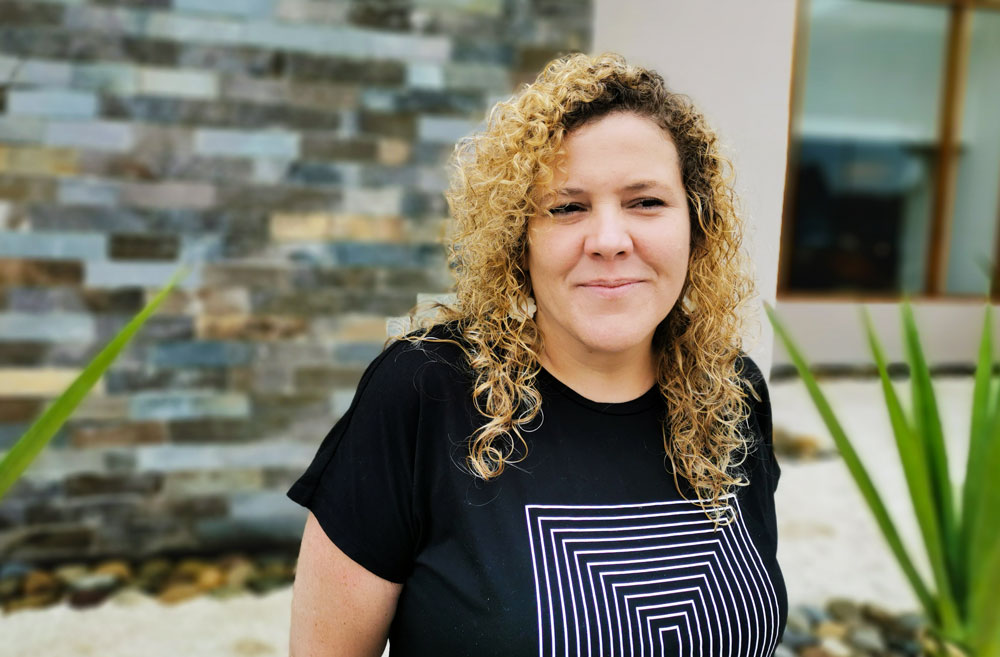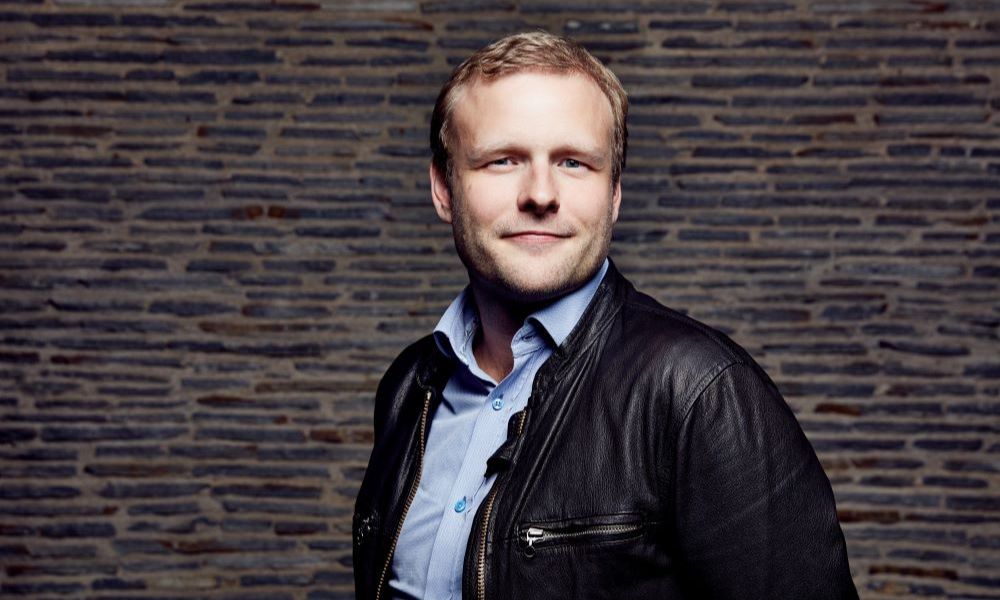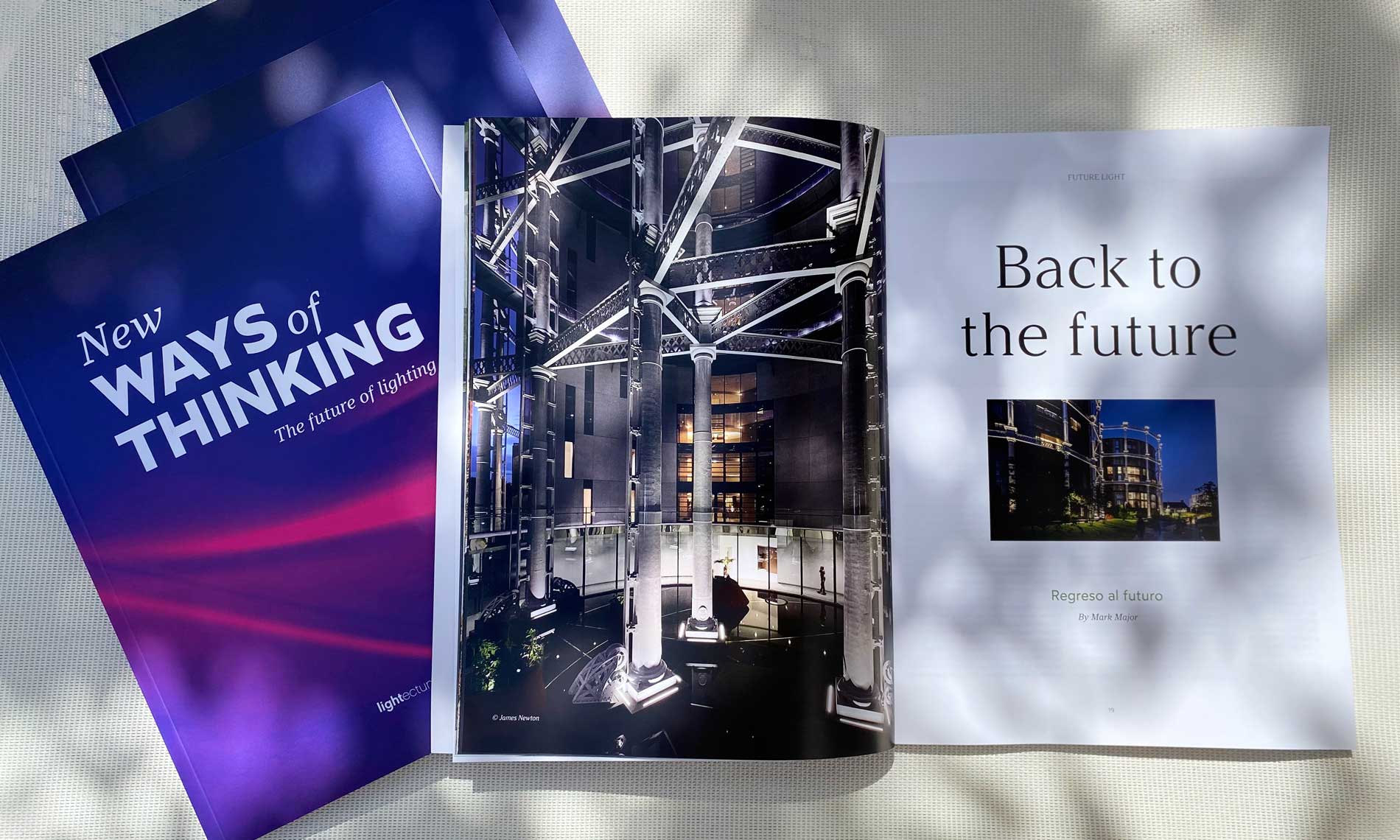
On May 16th, we commemorate International Day of Light, a date established by UNESCO to highlight the importance and countless possibilities that light offers to humanity. This day invites us to reflect on the fundamental role that light plays in our lives, as well as in the realm of art and design. On this special occasion, Lightecture has interviewed two lighting designers, Claudia Paz and Tapio Rosenius, to explore the nuances of light usage in their work and how it can impact contemporary society.

Claudia Paz
Founder and Director of Claudia Paz Lighting Studio
Claudia Paz is a pioneer in exploring new creative ways to harness light as a means of communication and human connection. Her passionate dedication to light led her to establish an independent studio, now recognized for its unique approach to projects that blend light, art, technology, and interaction with architecture and landscape. Through this integration, Claudia creates emotional experiences and offers innovative solutions that transcend the conventional limits of lighting.
International Day of Light seeks to raise awareness in society about the importance of light in our health and our environments. What do you think is the most relevant message to convey on this day?
Light, both natural and artificial, plays a crucial role in influencing our emotions and mood. Therefore, designers and architects must be aware of its impact and address its use professionally. It is essential to discern where and how much artificial light is required, as well as the appropriate duration of its exposure. Lighting design professionals meticulously address these aspects. Thus, it is vital to recognize the importance of our profession, as the intervention of a lighting designer in a project is as indispensable as that of an architect or engineer.
What questions should we ask ourselves as a society to progress towards more sustainable lighting with the environment, especially in a context where climate change poses an imminent threat?
The proposed question is complex and will likely generate subjective responses. It all depends on how society wishes to experience space. Some argue that streets need more light for safety reasons, a common concern in countries like Peru. However, personally, I believe society should promote the use of public space to ensure its safety, rather than relying solely on higher levels of illumination. Increasing illumination can create a false sense of security, especially in areas where one walks alone. I think the questions should come from different areas: architecture, urban planning, astronomers, lighting designers, etc. The key question would be how to find a balance between the function of lighting and achieving a lively city. How to create a balance between being able to observe the night but offering citizens exciting experiences, such as temporary light festivals or illuminated monuments, avoiding merely functional lighting, thus diminishing the importance of emotion.
How could we promote a more serene and balanced approach to lighting, as opposed to the current trend of over-lighting, without raising concerns about perceived safety by society?
The only way to achieve this is through debate, open discussion on the topic, and presenting evidence that it is possible. Sometimes, achieving a balance is difficult due to extreme positions, but I trust that professionals have the ability to do so.
As a specialist, what emerging trends in lighting do you believe will have a significant impact in the future?
I don’t like to talk about trends because I don’t believe lighting is a trend. I want to think that we can achieve something timeless for the city, where light is present to enhance color, textures, materials, and create shadows, among other things. Technology will help us develop increasingly discreet luminaires. From my perspective, the ideal for the city would be luminaires that integrate seamlessly, allowing us to appreciate the texture of the stones on the ground in a city like Cuzco, or the leaves reflected on the ground through a light reminiscent of the moon. Technology helps us reduce the number of light points, make lighting more sustainable, and creatively utilize it.

Tapio Rosenius
Lighting resercher, CEO de Poet Software
International Day of Light seeks to raise awareness in society about the importance of light in our health and our environments. What do you think is the most relevant message to convey on this day?
Light provides direct access to our subconsciousness. It can convey information in a peripheral manner without demanding any attention from us. This is a well-researched and well-known phenomenon. Light can be used to influence our choices, to draw crowds, to control your walking speed in a corridor, or to impact your appetite. Artificial light is a medium and a building material that has been fully digitalized in terms of control in recent years. That means it’s cheap and easy to manipulate in such an intricate way that there is really nothing comparable to it in our built environment. There is tremendous untapped power in harnessing light to assist humans in practical, psychological, and experiential ways.
What questions should we ask ourselves as a society to progress towards more sustainable lighting with the environment, especially in a context where climate change poses an imminent threat?
To me, the question here is: how can we do more with less? You can use light to enable multiple different uses for the same space or building; it is the magic ingredient. An office space can transform into a cocktail party venue, or a staff canteen can become a high-tech auditorium for corporate presentations. Instead of building more narrowly defined spaces divided by function, we can view everything through the lens of hybrid spaces and use light and media to achieve that in a sustainable way. I have dedicated the last 8 years of my life to developing technologies that enable lighting designers and architects to combine the latest light and media technologies to achieve this magical change within any space. One of the greatest motivators for doing so has been the opportunity to extract more value from already existing spaces, both functionally and experientially.
How could we promote a more serene and balanced approach to lighting, as opposed to the current trend of over-lighting, without raising concerns about perceived safety by society?
The most positively perceived lighting is that which is contextual. It is the light that belongs to that space in that moment, for the function that is happening there and then. We can all agree that the mood of a candlelit dinner might belong to a romantic restaurant on a Saturday evening, but we can also agree that the same space is lit differently eight hours later with bright white light to support cleaning. Both are correct ways to light a restaurant. It’s simply contextual. In practice, however, this can be hard to achieve and goes beyond simple preprogrammed lighting presets. The built environment doesn’t adhere to a predetermined timeline; moments present themselves sometimes in unpredictable ways. Crowds gather spontaneously in city squares or metro stations, and a busload of kids suddenly arrives at the museum lobby. The ambiance, focus, digital mediaand function of the space should change automatically to support that. The opportunity exists now to harness advanced technologies like sensors and machine learning to create lighting that anticipates, adapts, and optimizes automatically to support all different variables. That means lighting that is always right within the dynamically changing context.
As a specialist, what emerging trends in lighting do you believe will have a significant impact in the future?
The use of light to drive human behavior is the single most powerful trend for lighting that I can think of. There is a wealth of research available from the fields of behavioral science and consumer psychology to help any lighting designer utilize light to assist humans and promote positive behavior. As an example, we recently demonstrated, with a team of psychologists and behavioral scientists, that our interactive and responsive lighting technology increased the usage of a staircase in an office building by 14%. That translated to measurable health benefits, allowing the office workers to burn an extra 78,342 calories and collectively extend their lives by 21 days. It also saved 11,549 elevator trips, resulting in direct energy savings. Light can have a very positive impact if used intelligently to drive human behavior.







